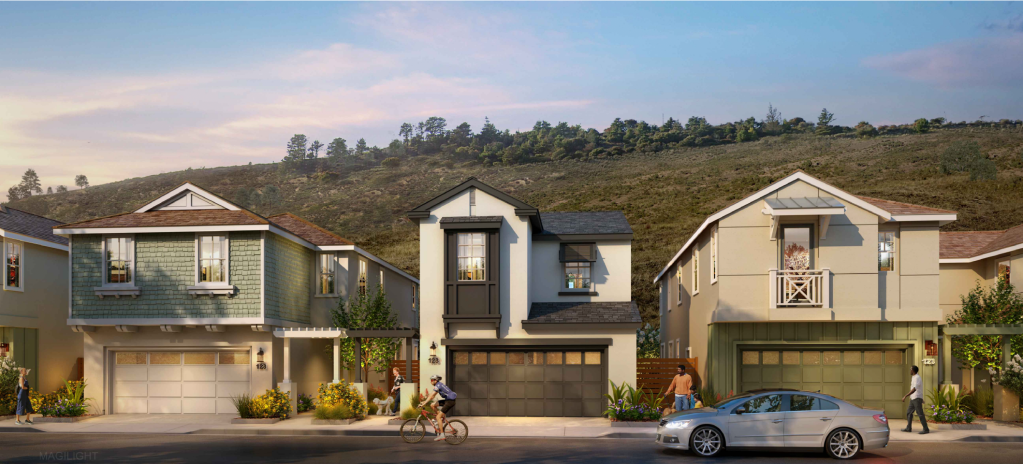A plan to build almost 200 condominiums atop a former Point Richmond quarry will be scrapped and replaced with one calling for 76 single-family homes instead.
The Richmond City Council on Tuesday approved the major revision proposed by New West Co., a Las Vegas developer, for its 6.3-acre project along Canal Boulevard and Seacliff Drive, first approved in February 2018.
New West now wants to build two-story stucco cottages on approximately 2,100 square-foot lots at the site of a former rock quarry nestled below Miller-Knox Regional Shoreline park. The homes would come with pre-installed solar panels, shared recreation space and paved access to the nearby Bay Trail.
Richmond Senior Planner Roberta Feliciano said the developer told city officials it cannot pencil out the original 193-condo project, partly because of soaring material and labor costs.
“They’ve marketed and tried to build the multi-family development for multiple years and were unable to do so,” Feliciano said. “And with COVID, they feel the market demands have changed.”
Eight of the proposed single-family homes, or 10% of the total, will be designated as affordable for buyers from low-income households, defined as $74,200 for a single occupant to $106,000 for a family of four.
Two thirds of the vacant, 18.4-acre site isn’t suitable for construction because it’s too steep, so the remaining 12.1 acres will be preserved as open space.
The original project approved in 2018 featured three-story condo buildings with one-, two- and three-bedroom units, as well as a neighborhood recreation clubhouse, fitness center and swimming pool, according to city documents.

Because the developer is building some affordable homes, the city will waive several development standards to pack in all 76 houses by reducing in half minimum lot sizes, widths and setbacks.
 Although the project’s switch from condos — which are typically more affordable than houses — means fewer residents likely will be able to buy their first home — or any home — in Point Richmond, it reflects an industry trend.
Although the project’s switch from condos — which are typically more affordable than houses — means fewer residents likely will be able to buy their first home — or any home — in Point Richmond, it reflects an industry trend.
The nonprofit Urban Institute reported that the stock of multi-family units built for homeowners instead of renters represented only 5.4% of all multi-family construction — the lowest in 50 years. The rate drops to 2.7% when adding all single-family and multi-family construction to the mix.
That’s why John Dalrymple, a political affairs consultant with Sheet Metal Workers Local 104, agreed with the developer that for any housing to be built on the site, the change to single-family housing was necessary.
“I track every residential project over 100 units — when it gets an application, when it gets built — and I can tell you right now, it’s very, very challenging,” Dalrymple said. “(The developer has) tried everything to get this built. They’ve reached out to a number of different partners with different ideas of how to finance it, so I think they’ve made their absolute best effort.”










